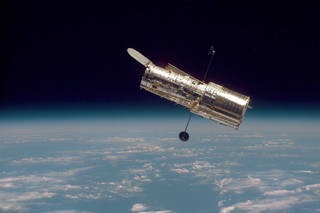A few days ago, NASA just fixed a 31-year-old telescope from a computer problem that started more than a month ago. How did NASA find the root cause of the problem and fixed the famous Hubble Space Telescope? Let’s find out.
The Root Cause of the Problem and the Solution
The issue is in the Power Control Unit (possibly in the power regulator), which gives the payload computer a steady stream of voltage. It resides in the SI C&DH (Science Instruments Command and Data Handling) unit. After identifying that this unit is problematic, they simply switched to the backup PCU, which enables science operations to be conducted.
Why Did NASA Take so Long to Find the Cause?
The problem on the Hubble Space Telescope is arguably simple, but it took NASA about a month to finally discover which part is malfunctioning. But this is because the issue is more vague than you might think. While computers on Earth can be diagnosed with apps or troubleshooting guides, they can’t once they’re in space. Engineers need to pinpoint the problem using cautious steps and large amounts of tests to avoid rendering the computer irreparable, compared to simply opening up your computer and replacing parts according to troubleshooting guides after hearing some weird beep codes.
On June 13, the payload computer on the Hubble Space Telescope suddenly halted, and all its instruments were put into safe mode. The main symptom of the issue is that instructions to read from or write to memory failed. This can be caused by many issues, including a failing RAM, processor, communication system between different pieces of hardware, power supply (the actual cause), or a software error.
The Troubleshooting Process
Once NASA found out that the payload computer failed, the first thing to do is to reboot it.
This usually fixes temporary software problems, and it does not work because it’s a hardware issue. After that, NASA thought that the memory module is failing, so they tried switching between memory modules. The effort was in vain, too.
After that, NASA considered other causes, such as a failing communication system between different pieces of hardware or processor. They decided to turn on the backup computer which hasn’t been used in the last 12 years, but this didn’t work too. The issue still lingered, preventing science operations from being done. At this point, NASA suspected that the CU/SDF (Command Unit/Science Data Formatter), which sends commands to the science instruments and gets science data ready for transmission back to Earth, has failed.
Finally, on June 30, they finally guessed it right. The team thought that the a power regulator in the Power Control Unit has failed, causing the issue. Finally, on July 14, it was officially announced that the PCU was the most likely cause of the problem, and that the switch to backup hardware was ready after some tests and reviews to minimize the risk of failure.
On July 17, the switch to backup hardware completed successfully, and the Hubble Space Telescope is operational once again. Recently, the first photos taken from the telescope after the computer glitch was released in this article, showing that it is healthy once again. It is all thanks to the indispensable troubleshooting process that occurred since June 13.
Conclusion
The Hubble Space Telescope has stopped working for a month, but successful efforts to bring it back online may be the most remarkable computer troubleshooting process recently conducted because of the complexity of the issue and the attitude of the engineers to bring the telescope back to life. For more computer troubleshooting tips, please read the article mentioned above.
References and Credits
- (2021, July 20). NASA Returns Hubble Space Telescope to Science Operations. Retrieved July 20, 2021, from https://www.nasa.gov/feature/goddard/2021/operations-underway-to-restore-payload-computer-on-nasas-hubble-space-telescope
- Meghan Bartels. (2021, July 15). See the first photos from the Hubble Space Telescope after a major computer malfunction. Retrieved July 20, 2021, from https://www.space.com/hubble-space-telescope-anomaly-update-history
- (2021, July 19). Hubble Space Telescope Glitch: What Happened & How NASA …. Retrieved July 20, 2021, from https://screenrant.com/nasa-hubble-space-telescope-glitch-what-happened-fix-explained/

